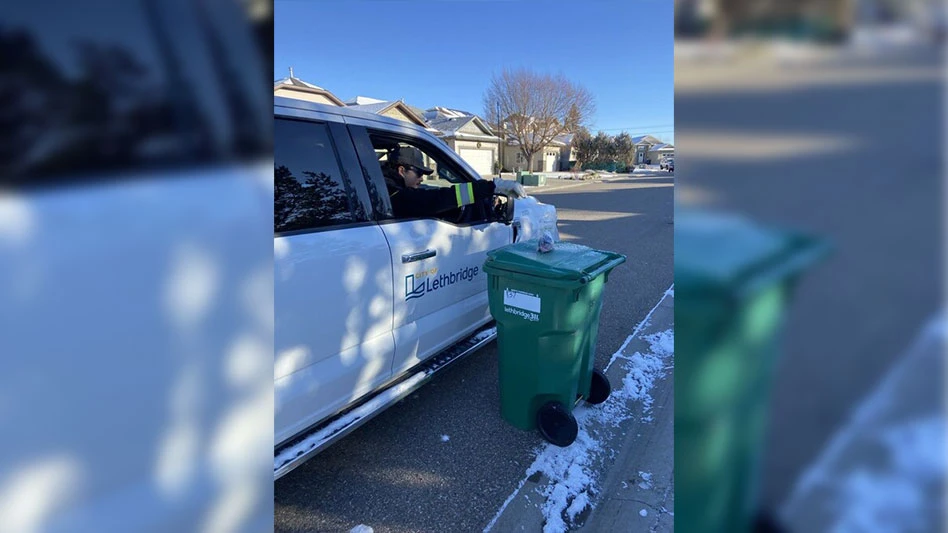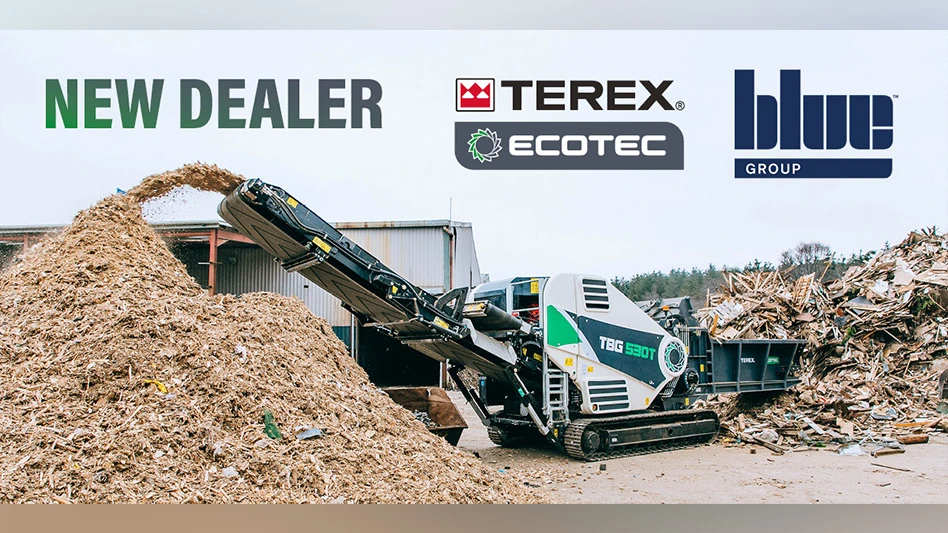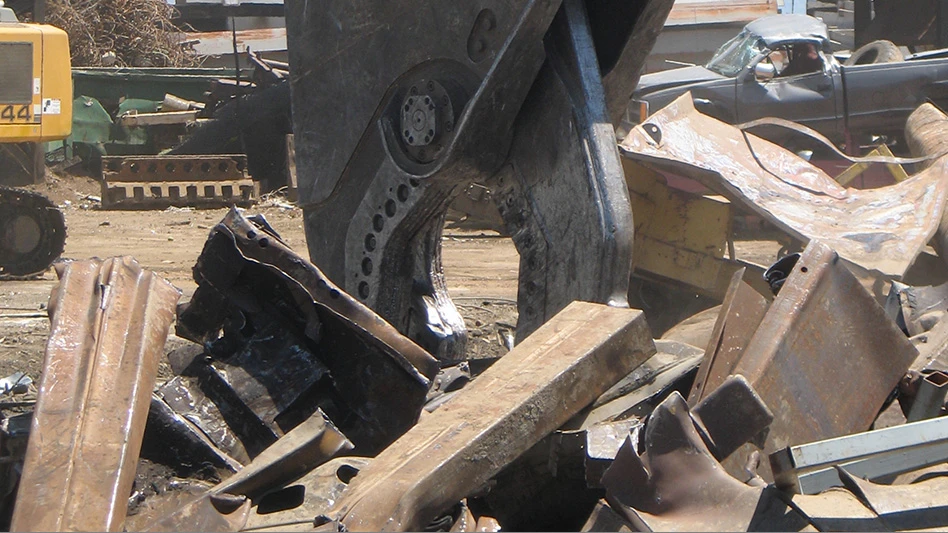A nonfunctioning shredding plant amounts to more than a minor inconvenience for a secure destruction company, bringing operations to a halt. The proper preventive maintenance can help companies avoid the downtime associated with major repairs or catastrophic failures.
Establishing and maintaining a routine can ensure that a company performs the necessary tasks. Having the shredder supplier spend some time instructing a company’s employees on the particulars of maintenance also can help to ensure that these tasks are performed correctly.
“All shredding system maintenance can be handled by in-house personnel with minimal training, says Michael Wilhoit, vice president of operations, Vecoplan LLC, Archdale, N.C.
Jack Cress, CEO of Cresswood Shredding Machinery, Cortland, Ill., says establishing preventive maintenance as a priority is essential on the part of managers of shredding operations. “It’s the key difference between being proactive or reactive, eliminating downtime and maximizing shredder safety and productivity,” he says.
THE BASICS
Jeff Robas, director of technical service for Allegheny Shredders, Delmont, Pa., outlines the essentials of preventive shredding system maintenance. “First, employees need to be properly trained in how to perform preventive maintenance on the shredding system,” he says. “Second, establish a systematic routine of preventive maintenance for all components. Third, document and verify that all maintenance is properly performed as indicated by the manufacturer. Lastly,” he adds, “identify any potential problems that have been discovered and determine what corrective action should be taken in resolving these problems.”
Amos Manufacturing, Alpena, Mich., provides service for Ameri-Shred equipment. The company’s Randy Beaudoin also stresses the importance of training personnel, adding that supervisors need to be trained on proper maintenance too.
Beaudoin says establishing accountability for preventive maintenance is necessary. “Someone needs to be in charge and oversee the program,” he says. “So many times I hear, ‘I thought someone else was greasing the machine.’”
Cress also notes the importance of accountability. “Set up a log sheet for each piece of equipment—one based on an hour meter is usually best,” he suggests. “Monitoring this maintenance log, performing recommended routine maintenance and creating operator and crew accountability are the next steps.” Cress adds, “If there is a system failure, you can go back to the logs for data-based answers.”
Destruction firms should consult their shredder manufacturer or the operators’ manual for preventive maintenance recommendations, as they are likely to vary by shredder type and manufacturer. “The manufacturers’ recommendations for each machine are specific and varied,” says Wilhoit. “It is the responsibility of the owner/operator to become proficient in the individual characteristics of their own machine.” However, he says the basic steps of preventive maintenance include maintaining cutter and counter knife sharpness, fluid levels, tolerances and torque on cutters, counter knives, bolts and screens and belt tension.
When an operation has consistent lapses in preventive maintenance, serious damage could result. “Lack of preventive maintenance is usually the major cause of catastrophic failures,” Robas says. “Besides the obvious cost of replacement of worn out or damaged components, the loss of ‘shred time’ is usually the most costly.”
 |
| Preventive maintenance extends beyond the shredder itself to conveyor belts and related equipment. |
CLEANLINESS AND LUBRICATION
Lubrication is a critical component of preventive maintenance. This involves using the correct lubricant in the correct amount and on the correct schedule, Beaudoin says.
Insufficient greasing of sprockets and drive chains is among the three most frequent issues Robas has seen in destruction operations. “When I was conducting on-site inspections a few years ago, this one issue was common with many facilities,” he says. “In some cases the drive chains were bone dry, and the sprocket’s teeth were worn down to points. It was just a matter of time, a few weeks, maybe a couple of months, before an entire shredding system would come to a stop because of such a simple procedure being neglected.”
Cress suggests completely clearing in-feed conveyors and the shredder of material at the end of a shift. “If material is left in the shredder or on the in-feed conveyors when the machine is shut down, tramp metal may be introduced into the shredder without the operator’s knowledge or control, thus leading to a damaging and costly event,” he says. “That’s a clear example of why good housekeeping practices go hand-in-hand with shredder maintenance.
In addition to sprockets and drive chains, spur/drive gears and the drive coupler also should be lubricated according to the schedule provided by the shredder manufacturer.
Robas also says that cleaning and oiling of the cutting assembly is an important part of preventive maintenance. “One of the main reasons for low capacity in a shredder is the cutting assembly is packed full of material,” he says. “This not only decreases capacity but hinders proper lubrication of the cutters.”
Maintaining proper tensioning of drive belts also contributes to proper shredder functioning. Robas says the drive belts will squeal when the shredder jams, indicating they are loose. “Typically, you’ll hear them, smell burning rubber and notice the capacity of your shredder isn’t like it used to be,” he adds.
Cress recommends “seeking sound advice,” saying operators need to listen to the shredder and become attuned to normal operating sounds.
Vecoplan’s Wilhoit says the most common service calls to his company have to do with dull cutting tools. The preventive maintenance tasks he sees operators overlooking most often involve cleaning the hydraulic components and cooling unit filters.
Amos commonly responds to requests for personnel training and education on shredding equipment, Beaudoin says. “This results from personnel changes, change of ownership and equipment relocation.”
“We would recommend that professional service be used if existing personnel is untrained, new or change of ownership has taken place. Training by a factory technician would highly be recommended anytime new personnel is introduced to our equipment,” Beaudoin says.
When it comes to obtaining necessary replacement parts, Jim Wagner, production manager for Allegheny Shredders, says the company can ship basic replacement parts to customers within 24 hours. Spare parts packages also are available, which allow destruction companies to keep common wear parts in inventory.
WHEN TO SEEK SERVICE
While, according to sources, most destruction companies opt to perform preventive maintenance in house rather than use the services of the manufacturer, dealer or outside service company, some issues may be best left to a manufacturer or its representative. For instance, Beaudoin recommends contacting the manufacture or its authorized representative for an ongoing maintenance issue that has not been adequately resolved through phone support.
“Ideally, a customer should contact the manufacturer or authorized dealer for professional service when they have new employees to train,” Robas says, “or if there’s been major damage to the equipment (such as broken cutters, damaged drive shafts, damaged or missing safety guards or covers, etc.).”
Wilhoit suggests, “Professional help should be used for electrical component replacement or rotor/gear drive replacement.”
Robert Wagner, director of marketing for Allegheny Shredders, says many large destruction firms opt to have service technicians from Allegheny come in yearly to train personnel on proper equipment operation and maintenance and to inspect the equipment to determine any deficiencies in preventive maintenance.
Regardless of the approach a destruction company adopts, preventive maintenance is critical to optimal shredding system functioning.
Latest from Recycling Today
- Phoenix Technologies closes Ohio rPET facility
- EPA selects 2 governments in Pennsylvania to receive recycling, waste grants
- NWRA Florida Chapter announces 2025 Legislative Champion Awards
- Goldman Sachs Research: Copper prices to decline in 2026
- Tomra opens London RVM showroom
- Ball Corp. makes European investment
- Harbor Logistics adds business development executive
- Emerald Packaging replaces more than 1M pounds of virgin plastic





